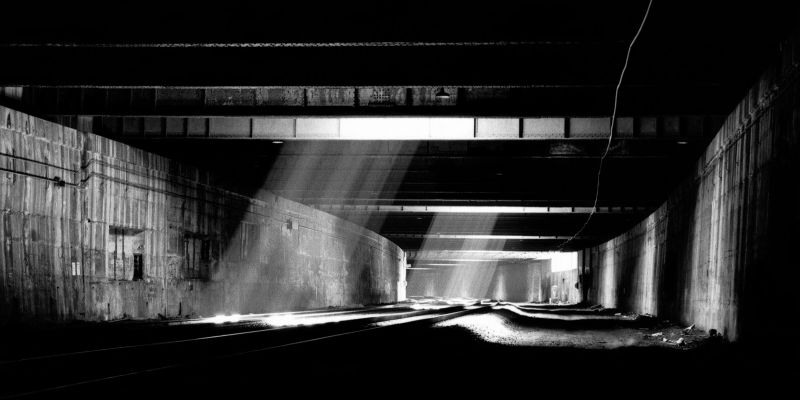Overview
In Irina Nersessova’s work, she uses Margaret Morton’s photography of the homeless tunnel dwellers as a reference to analyze the reality of homelessness in New York. She explains the link that people have with their environment, exposes New York’s faulty habits that are driven by consumerism, and reinvents the idea of what it means to be homeless.

margaretmorton.com
Nersessova uses the views of Situationist International to analyze the situation we are presented with in Morton’s photographic book.
Situationist International’s intent to eliminate the divide between art and life by examining life as a whole led to the creation of the term flaneur. A flaneur leaves inhibitions behind and journeys into places that are not traveled to observe the world around them. Maps of the city outline tourist attractions, historic landmarks, and places that uphold the image of the city. A tourist will follow these maps while a true observer, or flaneur, will explore the left out places with the intent of understanding and connecting with the environment. In this sense, Margaret Morton is a modern flaneur and her camera is her tool. She abandons ideas of social status in capitalistic New York, journeys into the tunnel, and observes the forgotten world.
Space and Identity
The tunnel in which the homeless live provides a sense of security in a literal sense because it is a refuge for the undesirables. There is irony in the fact that the dark and desolate nature of the tunnel that scares the average person is what gives its inhabitants the feeling of a safe haven. “The tunnel responds to space as the product of society by taking in the residents who have been failed by that society” (Nersessova 33). Histories of war, loss, death, and more have driven these people to the tunnel, where their residence has become one of peace and safety from aboveground life.
The homeless live and exist far outside the consumerism and capitalism of NYC. The tunnel gives its residents space to think about their identity. They work out of necessity and create structures for basic needs, unlike the shoppers and wine-and-diners of the city. The images that consumers see construct a sense of escape through consumerism. Homeless people are granted a certain level of awareness by their situation that the average consumer doesn’t have. Unlike consumers, they are not brainwashed by the ads, commercials, and material things that consumers are conditioned to want. This introduces the economic issue of homelessness from a psychological standpoint.
Because space and identity go hand in hand, even the tunnel cannot exist as merely an impersonal shelter. Artwork along the tunnel links the refuge to the identity of its residents.

margaretmorton.com
The homeless are actually more connected with their environment and space than those who live more comfortably. More emotional investment and effort is put into the handmade homes in the tunnel than the homes of city dwellers.
The typical images of New York City are engraved in our minds by consumerism: glimmering skylines, glistening waters, and exciting lights that promise opportunity. To keep up this façade, the homeless are pushed out of sight. The lack of public space where the homeless are allowed to exist or be seen also nudges them to move underground. By denying them a home, society is denying them an opportunity of self-identification.
Re-defining Homelessness
After reading Nersessova’s analysis, the definition of homelessness is not as clear-cut. The people who are deemed homeless have homes built from scrap materials. Therefore, homelessness is not the lack of having a home, but the vulnerability of the home to destruction. “The homeless are faced with a reality others avoid recognizing by divorcing themselves from urban space and by providing themselves with a false impression of control by obtaining material signs of wealth and security” (Nersessova 37). Inferiority is placed on the homeless because they do not legally own their space. This is ironic because plenty of those who live above the poverty line do not own their homes.
Nersessova acknowledges how Morton uses her stance to give voice to neglected individuals of society. As a society, we think we are informed about the homeless because of stereotypes and societal perception, but we are actually unaware of who they are and what it means to be homeless. By destroying their homes and criminalizing their existence, we are showing how much we truly misunderstand.

margaretmorton.com